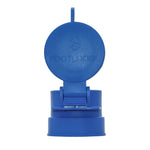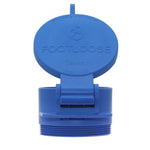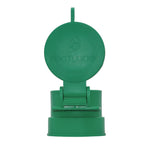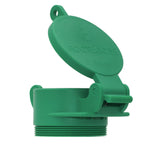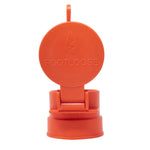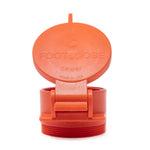You have no items in your shopping cart.
Composite manhole covers—typically made from fiber-reinforced polymer (FRP) or sheet-molding compound (SMC)—have moved from niche to mainstream. Utilities, campuses, refineries, and municipalities are adopting them to curb lifting injuries, corrosion, theft, and stray-current risks—while still meeting recognized load classes for streets and industrial yards. If you’re spec'ing or standardizing access covers, here’s why composites deserve a serious look.
What “composite” means (and how strong they are)
Composites combine reinforcing fibers with a polymer matrix to deliver high stiffness, impact resistance, and long-term durability. Modern lids are tested to recognized load classes (e.g., EN 124 categories A15–D400 and beyond) and many are designed for U.S. “traffic-rated” service comparable to AASHTO M306 applications. In short: there’s a composite solution for pedestrians, streets, and heavy-duty areas—specified in the same class language you’re used to.
1) Lighter weight = safer, faster handling
Composite lids can be dramatically lighter than ductile iron—often up to ~70% less. That directly reduces strain and two-person lifts during inspections and emergency responses. As a rule of thumb, remember the NIOSH Lifting Equation’s 51-lb “ideal conditions” constant: lighter components make compliance—and safe, repeatable handling—far more achievable.
What you’ll notice in the field
-
One person with a rated lifter can open/close more structures per shift
-
Less fatigue and fewer soft-tissue injuries
-
Easier truck stocking and on-site maneuvering
2) Corrosion resistance where metal struggles
Hydrogen sulfide (H₂S) in wastewater and salt in coastal environments are brutal on metals. Composites don’t rust and don’t need repainting, so hinges, seals, and textures keep working without constant touch-ups. That’s real lifecycle savings in humid, coastal, or H₂S-rich locations.
3) Non-conductive and thermally insulating
Composite covers are electrically non-conductive and thermally insulating—ideal near electrified rail, substations, EV charging, and fueling infrastructure. Benefits include reduced stray-current/shock risk and fewer “hot surface” complaints under summer sun.
4) Low theft incentive
Metal lids have scrap value; composites don’t. Agencies that swap to composites routinely report fewer theft incidents and fewer emergency barricades—improving public safety and cutting unplanned replacement spend.
5) Safer surfaces and quieter sites
Molded anti-slip textures maintain friction when wet—useful in pedestrian plazas, pump yards, and forecourts. Composites also tend to be quieter under traffic (less “clanking”), which helps around residences, campuses, and retail sites.
6) Lower total cost of ownership
While unit price can be comparable to (or higher than) iron, composites pay back through:
-
Faster inspections and fewer labor hours
-
Minimal corrosion maintenance (no blasting/repaint cycles)
-
Reduced theft replacements
-
Longer cosmetic life (UV-stable, non-chalking top surfaces)
7) Sizes and configurations for real-world retrofit
Composite assemblies are available in common clear openings (e.g., 18″, 20″, 24″, 36–44″) and multiple heights to match sump depth. Popular closures include:
-
Lay-in (simple drop-in access)
-
Cam-lock (latch-down, often with gasket/D-seal for inflow/odor control)
-
Bolt-down (added security in theft-prone corridors)
Domed tops help shed ponding water; stainless rims/skirts are offered for high-corrosion zones.
8) Where composites shine (and when iron still fits)
Great fits
-
Pedestrian zones & campuses: lighter lifts, slip-resistant tops, quieter operation
-
Coastal & H₂S environments: corrosion-proof with minimal upkeep
-
Fueling sites & utilities: non-conductive, spark-resistant construction
-
Theft-prone corridors: no scrap value cuts losses and hazards
Stick with iron when
-
Agency standards require it on specific routes
-
Legacy frames or special patterns exist only in metal (unless you plan a frame swap)
Quick spec checklist
-
Load class: Match EN 124 class (A15/B125 footways; C250 curb; D400 streets; E600/F900 heavy duty) or require documentation showing traffic service comparable to AASHTO M306 where applicable.
-
Surface & sealing: Non-skid texture; gasketed lids (D-seal) for inflow/odor control; bolting where ponding or security is a concern.
-
Ergonomics: Confirm one-person removal with a rated lifter; include handling instructions in O&M.
-
Compatibility: If reusing frames, verify fit; otherwise plan composite-compatible frames, especially in traffic areas.
Frames & Covers – Composite
Cover shall be non-conductive, corrosion-resistant, and anti-slip; provide gasket and bolting where indicated (low points or flood-prone areas). Provide handling instructions and compatible lifting points for one-person removal using mechanical aids; avoid manual prying.



